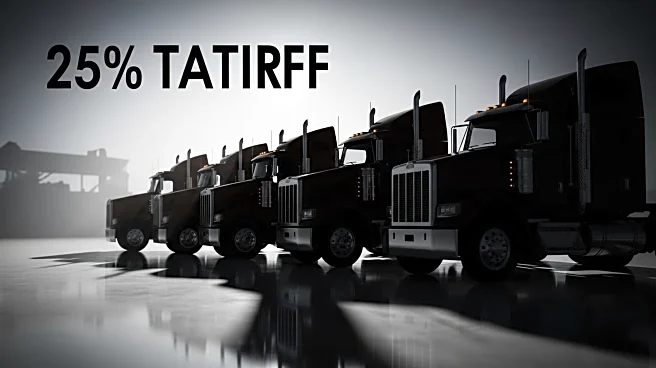What's Happening?
The Trump administration has announced a 25% tariff on imported medium- and heavy-duty trucks, effective November 1, 2025. This decision is part of a broader strategy to protect domestic industries and reduce reliance on foreign manufacturing. The tariffs are a result of a probe by the U.S. Commerce Department under Section 232 of the Trade Expansion Act, which allows for import taxes on goods deemed critical to national security. The investigation highlighted that a small number of foreign suppliers dominate U.S. imports due to predatory trade practices. The new tariffs are expected to impact various sectors, including shipping, construction, and municipal services, by potentially increasing vehicle prices.
Why It's Important?
The imposition of these tariffs is significant as it aims to bolster domestic manufacturing and protect American jobs. However, it also poses challenges for industries reliant on imported trucks, potentially leading to increased costs for businesses and consumers. Companies like Stellantis NV, General Motors Co., and Ford Motor Co. are directly affected, with some pushing for exemptions to avoid competitive disadvantages. The tariffs are part of a larger pattern of industry-specific levies under the Trump administration, which have already affected steel, aluminum, and other sectors. The move underscores ongoing trade tensions and the administration's focus on national security in trade policy.
What's Next?
The tariffs could lead to further negotiations and lobbying efforts by affected companies seeking relief or exemptions. The administration may face pressure from both domestic and international stakeholders to reconsider or adjust the tariffs. Additionally, the Supreme Court is set to hear arguments related to the broader use of tariffs under different authorities, which could influence future trade policy decisions. The outcome of these discussions and legal challenges will be crucial in determining the long-term impact on the U.S. economy and its trade relationships.










